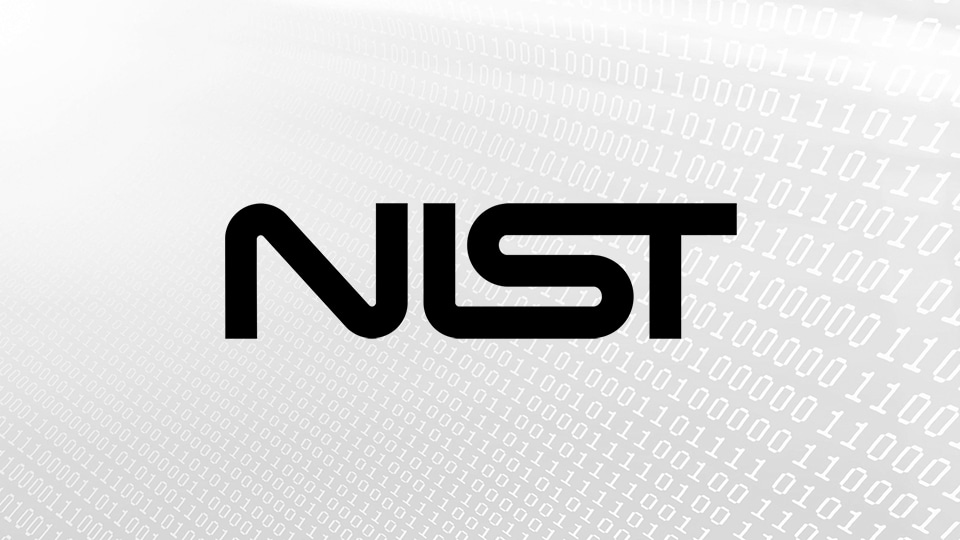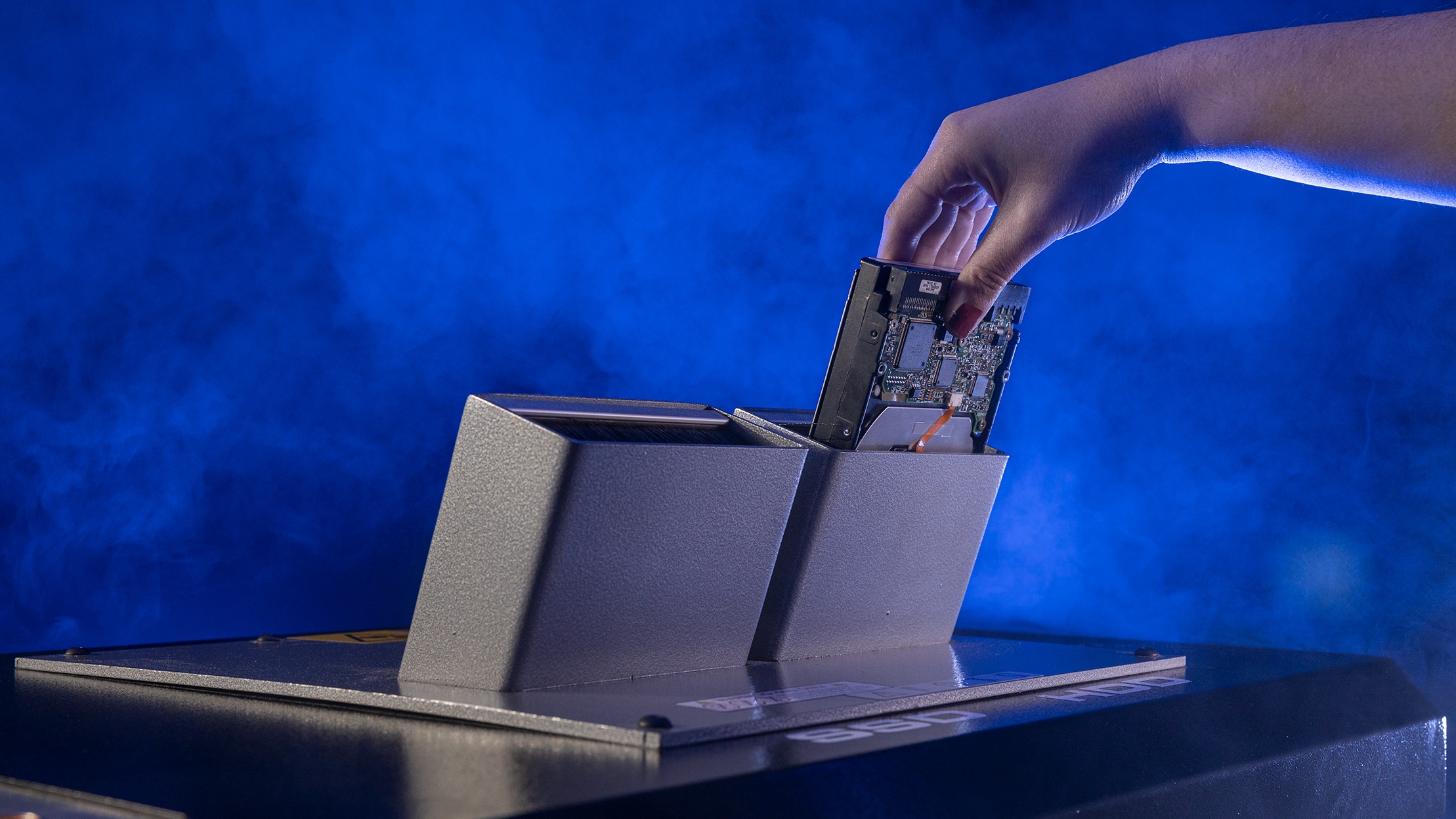The world of data storage has been exponentially growing for the past several years and shows no signs of slowing down. From paper to floppy disks, HDDs to SSDs, and large servers to cloud-based infrastructures, the way we store data has become increasingly intricate using the latest and greatest major technological advancements.
As the way we store our data continues to evolve, it’s becoming increasingly vital for data centers, federal agencies, and organizations alike to implement proper and secure data cybersecurity and information security practices, and appropriate procedures for secure data sanitization and destruction. Data center compliance is essential for various reasons, primarily centered around ensuring the security, integrity, and reliability of their data and systems. By complying with industry standards and regulations, data centers can safeguard sensitive data and ensure that proper security measures are in place to prevent unauthorized access, data breaches, and cyberattacks – both while data storage devices are in use and when they reach end-of-life.
In summary, data center compliance falls under both cybersecurity and physical security best practices, and secure data sanitization and destruction. For a data center to operate at optimal performance and security, one cannot be without the other.
When discussing data center compliance, it’s important to not leave out an important player: the National Institute of Standards and Technology (NIST). NIST is one of the most widely recognized and adopted cybersecurity frameworks, is the industry’s most comprehensive and in-depth set of framework controls, and is a non-regulatory federal agency. NIST’s mission is to educate citizens on information system security for all applications outside of national security, including industry, government, academia, and healthcare on both a national and global scale.
Their strict and robust standards and guidelines are widely recognized and adopted by both data centers and government entities alike seeking to improve their processes, quality, and security.
In today’s blog, I want to dive into the two most important NIST publications data centers should consistently reference and implement into their security practices: NIST 800-88 and NIST 800-53. Both standardizations help create consistency across the industry, allowing data centers to communicate and collaborate with, and more effectively protect partners, clients, and regulatory bodies. Again: cybersecurity and destruction best practices go hand-in-hand, and should be implemented as a pair in order for a data center to operate compliantly.
Step 1: Data Center Security and Privacy Framework
NIST 800-53
NIST 800-53 provides guidelines and recommendations for selecting and specifying security and privacy controls for federal information systems and organizations. While NIST 800-53 is primarily utilized by federal agencies, its principles and controls are widely recognized and adopted as a critical resource for information security and privacy management, not only by federal agencies but also by private sector organizations, international entities, and more importantly, data centers.
NIST 800-53 serves as a comprehensive catalog of security and privacy controls that data centers can use to design, implement, and assess the security posture of their IT systems and infrastructure, all of which are crucial in sustaining a data center. The controls are related to data protection, encryption, data retention, and data disposal, and serve as a valuable resource for data centers looking to establish intricate and well-rounded cybersecurity and information security programs.
NIST 800-53 addresses various aspects of information security, such as access control, incident response, system and communications protection, security assessment, and more. Each control is paired with specific guidelines and implementation details. These security controls, of which there are over a thousand, are further categorized into twenty “control families” based on their common objectives. (For example, access control controls are grouped together, as are incident response controls, and so forth.) These control families cover various aspects of security, including access control, network security, system monitoring, incident response, and more, offering data centers much higher rates of uptime and ability to minimize downtime.
Since data centers often handle sensitive and valuable information, they require robust physical security measures to prevent breaches and unauthorized access. NIST 800-53 addresses physical security controls, including access controls, video surveillance, intrusion detection systems, and environmental monitoring, which are vital in protecting the data center’s infrastructure.
It’s important to mention that while NIST 800-53 provides an increasingly valuable foundation for securing data center operations, organizations may need to tailor the controls to their specific environments, risk profiles, and compliance requirements. NIST 800-53 offers a flexible framework that allows for customization to suit the unique needs of different data center operators, making it a vital and critical resource.
Step 2: Data Destruction Compliance
NIST 800-88
First published in 2006, NIST 800-88 and its Guidelines for Media Sanitization provides guidance and regulations on how citizens can conduct the secure and proper sanitization and/or destruction of media containing sensitive, classified, and top secret information. NIST 800-88 covers various types of media, including hard drives (HDDs), solid-state drives (SSDs), magnetic tapes, optical media, and other media storage devices. NIST 800-88 has quickly become the utmost standard for the U.S. Government and has been continuously referenced in federal data privacy laws. More so, NIST 800-88 regulations have been increasingly adopted by private companies and organizations, especially data centers. The main objective is to help data centers and organizations establish proper procedures for sanitizing media before its disposal at end-of-life.
When a data center facility or section is being decommissioned, equipment such as servers, storage devices, and networking gear must be properly sanitized and disposed of. NIST 800-88’s guidelines help data center operators develop procedures to securely handle the removal and disposal of equipment without risking future data breaches
When it comes to sanitizing media, NIST 800-88 offers three key methods:
- Clearing: The act of overwriting media with non-sensitive data to prevent data recovery.
- Purging: A more thorough and comprehensive method that will render the stored data unrecoverable using advanced technology, such as cryptographic erasure and block erasing.
- Destruction: The physical destruction of a storage device either by way of shredding, crushing, disintegrating, or incineration. This often includes electromagnetic degaussing, a method that produces a buildup of electrical energy to create a magnetic field that scrambles and breaks the drive’s binary code, rendering it completely inoperable. The strength of the degausser is critical when eliminating sensitive information from magnetic media. Typically, degaussers evaluated and listed by the National Security Agency (NSA) are considered the golden standard.
However, even these methods can come with their own drawbacks. For instance:
- Clearing: For sensitive, classified, or top secret information, clearing or overwriting should never serve as the sole destruction method. Overwriting is only applicable to HDDs, not SSDs or Flash, and does not fully remove the information from the drive.
- Purging: Unfortunately, purging methods are highly prone to human error and are a very time-consuming process.
- Destruction: Once the drive has been destroyed, it cannot be reused or repurposed. However, this method provides the assurance and security that the data is fully unrecoverable, the process can take mere seconds, and there is no room for human error.
The chosen destruction and/or sanitization method depends on the sensitivity of the information on the media and the level of protection required, so it is crucial that data centers and organizations take into account the classification of information and media type, as well as the risk to confidentiality. NIST 800-88 provides valuable guidance on media sanitization practices, which are crucial for data centers to ensure the secure disposal of data-filled devices while minimizing the risk of data breaches. Proper implementation of NIST guidelines allows data center officials to protect sensitive information and maintain data security throughout the lifecycle of data center equipment.
The Importance of Verification
NIST guidelines, specifically NIST 800-88, have become the industry standard when it comes to secure data sanitization; however, they are not as definitive as other regulatory compliances. With NIST, the responsibility of data sanitization falls onto data centers’ or an agency’s chief information officers, system security managers, and other related staff.
As discussed above, the destruction and/or sanitization method depends on the sensitivity of the information on the media and the level of protection required, so it is critical to the security of the end-of-life data that organizations discuss the matters of security categorization, media chain of custody including internal and external considerations, and the risk to confidentiality.
Regardless of the method chosen, verification is the next critical step in the destruction and sanitization process. NIST verification typically refers to the process of validating or verifying compliance with standards, guidelines, or protocols established by the data center and/or organization. By NIST 800-88 standards, verification is the process of testing the end-of-life media to see if the stored information is accessible.
For sanitization equipment to be verified, it must be subjected to testing and certification, such as the NSA evaluation and listing, and must abide by a strict maintenance schedule. For proper sanitization, the device must be verified through a third party testing should the media be reused. However, when media is destroyed, no such verification is necessary, as the pulverized material itself is verification enough.
Since third party testing can be impractical, time consuming, and a gateway to data breaches, we at SEM always push for the in-house sanitization and destruction of media as the only choice to ensure full sanitization of data and the only way to mitigate future risks. When destroying data in-house, companies can be positive that the data is successfully destroyed.
Conclusion
When it comes to data center compliance and security, there is no one-stop-shop. Adhering to both NIST 800-88 and 800-53 guidelines enhances the reputation of data centers by demonstrating a commitment to data security and privacy. This can help build trust with clients, customers, and stakeholders, leading to stronger business relationships. More importantly, these guidelines are necessary when collecting, storing, using, or destroying certain data. NIST provides educational resources, training materials, and documentation that help data center staff understand security concepts and best practices, empowering data center personnel to implement effective security measures.
At SEM, we have a wide range of NSA listed and noted solutions and CUI/NIST 800-88 compliant devices designed for you to securely destroy sensitive information. After all, the consequences of improper data destruction are endless and there is no statute of limitations on data breaches. No matter what the industry, purchasing in-house, end-of-life data destruction equipment is well worth the investment. Need us to craft a custom solution for your data center? You can find out more here.




